The World of Charles and Ray Eames exhibition opens at the Barbican
From triple-screen films to plywood chairs, the multi-disciplinary careers of American Modernist design duo Charles and Ray Eames are the focus of an exhibition at London's Barbican Centre.
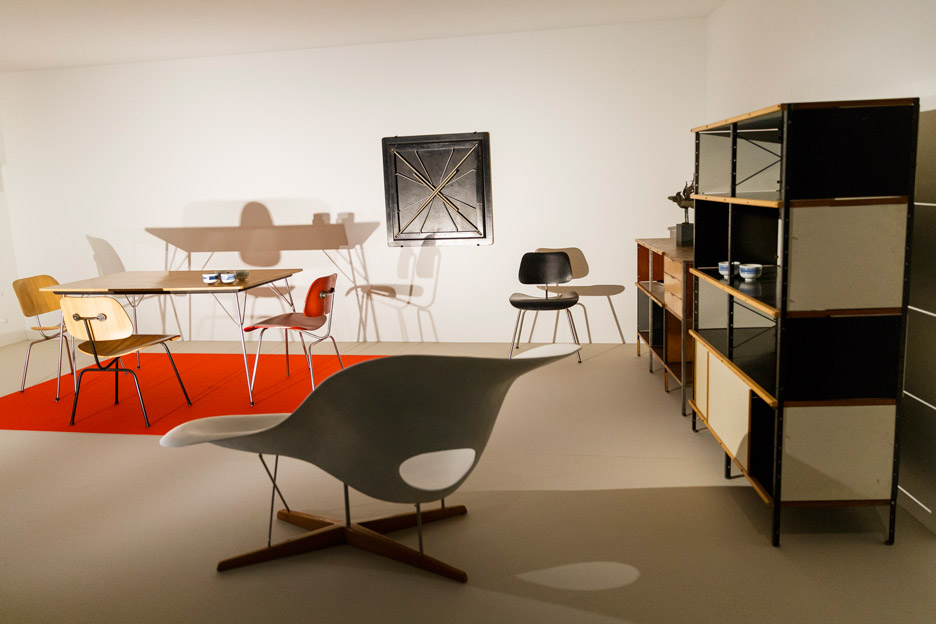
Opening to the public tomorrow, The World of Charles and Ray Eames brings together the pair's work across architecture, furniture, film, communication and art direction.
Curated by the Barbican's Catherine Ince, the exhibition of over 380 pieces created during the designers' lifetimes forms the first Eames retrospective in the UK since 1999.
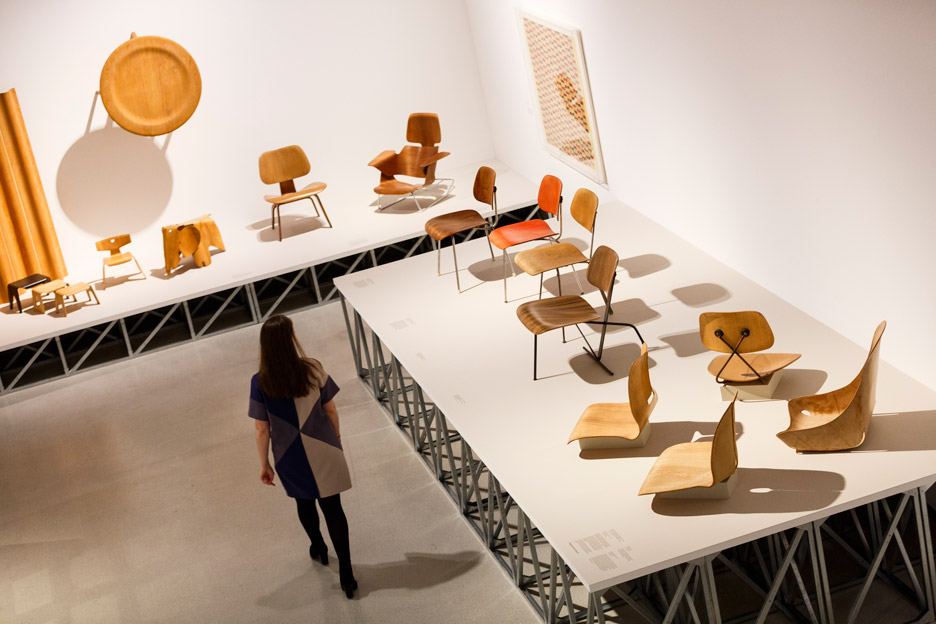
"It felt like it was time to reconsider their work," Ince told Dezeen. "Lots of people are still very familiar with the furniture only."
The Eameses were famed for their Modernist principles and "the best quality, to the most people, for the least money" approach to design, for which they gained international acclaim and fans that include designer Ora-Ïto and even rapper Ice Cube.
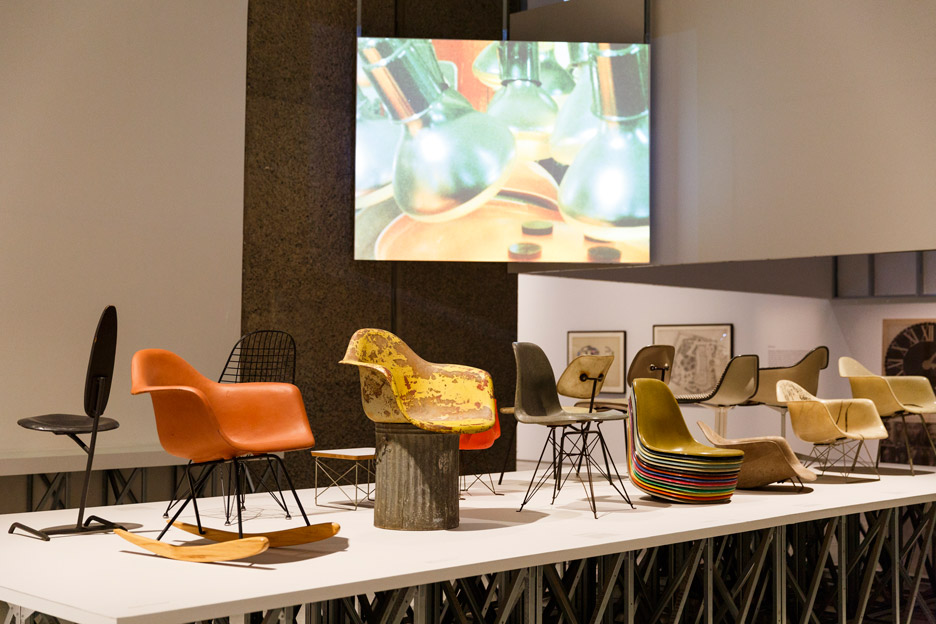
Their Los Angeles office at 901 Washington Boulevard was set up during the second world war and was located just down the coast from their 1949 home: Case Study House 8, which now hosts the Eames Foundation.
Working during the mid-20th century, the duo's famous furniture designs include the Eames Lounge Chair with curved plywood supporting sections and the DSW chair that features a moulded plastic shell.
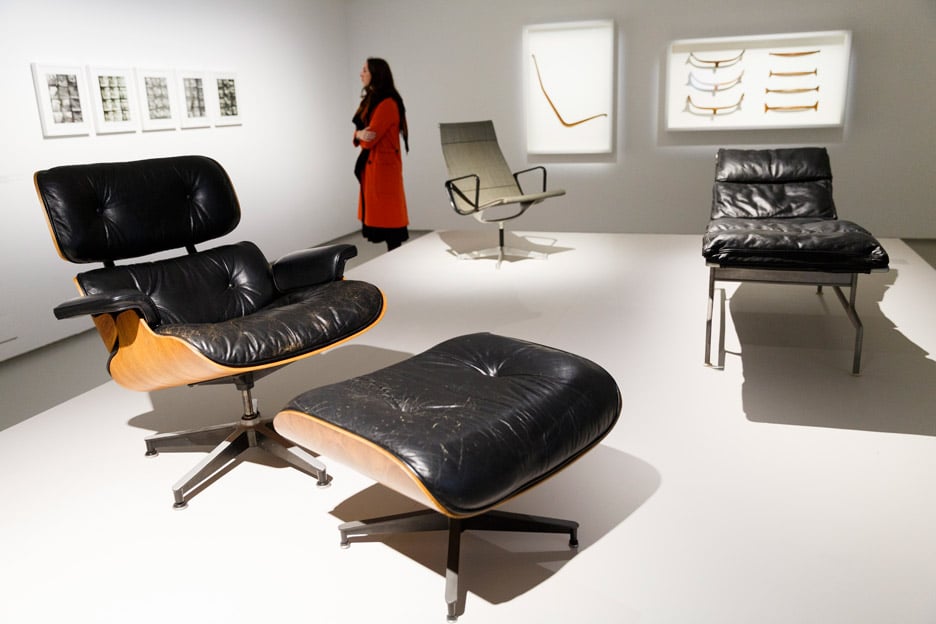
Charles died in 1978 and Ray a decade later, but the husband-and-wife team's work remains as popular as ever. Their furniture is still produced by Herman Miller in the USA and Vitra in Europe.
"I think that they're popular always, and there's always something new to discover – their archive is so extensive," said Ince. "You can find new ways to slice through their work and make it feel fresh again."
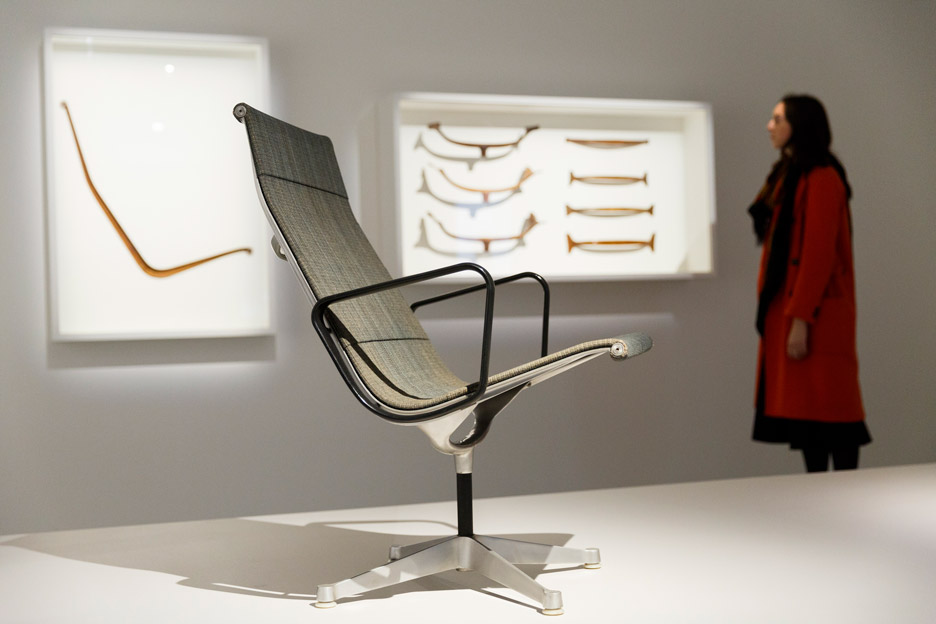
Visitors to the exhibition in the Barbican Centre's third-floor gallery are greeted by a giant curved-plywood prototype for a plane nose, borrowed from New York's Museum of Modern Art (MoMA).
A screen beside the giant structure shows a tour of the studio filmed by Charles using a kaleidoscopic camera, which he presented during a talk at the Royal Institute of British Architects when asked to show imagery of their workspace.
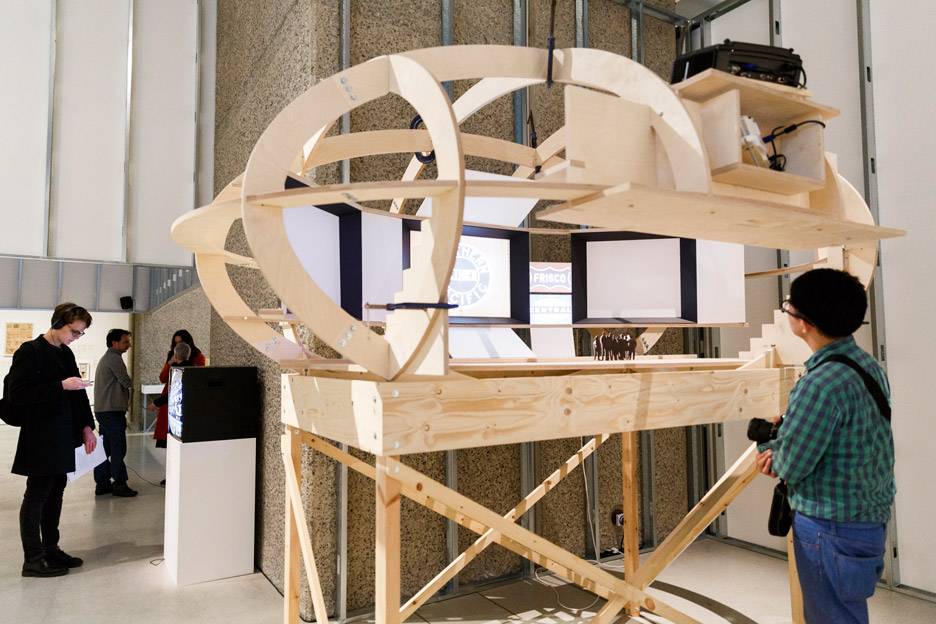
Further on is a selection of chair studies and experiments that combine curved plywood sections and different-shaped bases.
Models produced by Rogers Stirk Harbour and Partners, and original drawings of Case Study Houses 8 and 9, are among the exhibits that represent the Eames' architectural achievements.
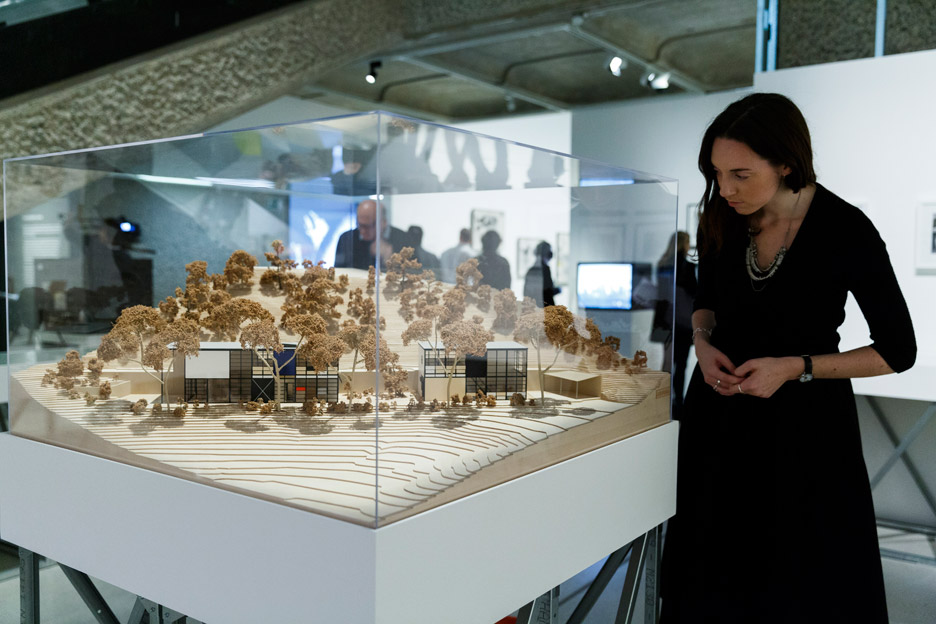
"I think there is a sort of optimism that is present [in their work], it comes out of the period so there is a sort of likeness and joy to their work," Ince said.
"You delight in the fact that they delighted in the material world, cultural artefacts and science and technology. I think people also know that the designs that they produced work very well."
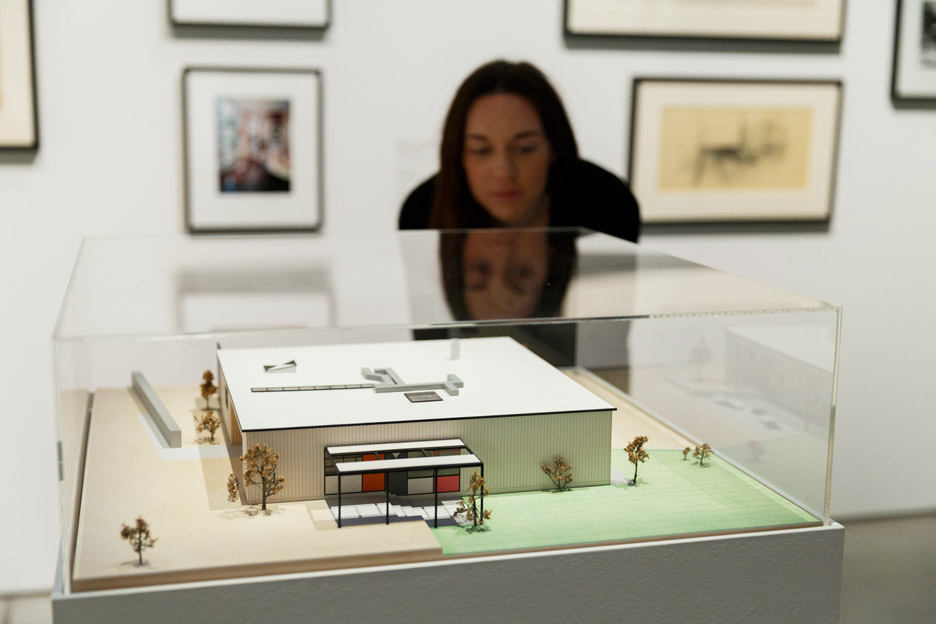
Collaborations with fellow architects and designers, including Buckminster Fuller, Alexander Girard and Eero Saarinen, are also demonstrated through the exhibition.
Another focus is the duo's multi-media approach to visual communication. For example, a scale installation of Think – the multi-screen film presentation shown in the IBM Pavilion at New York's 1964-65 World Fair – has been restored and is on show.
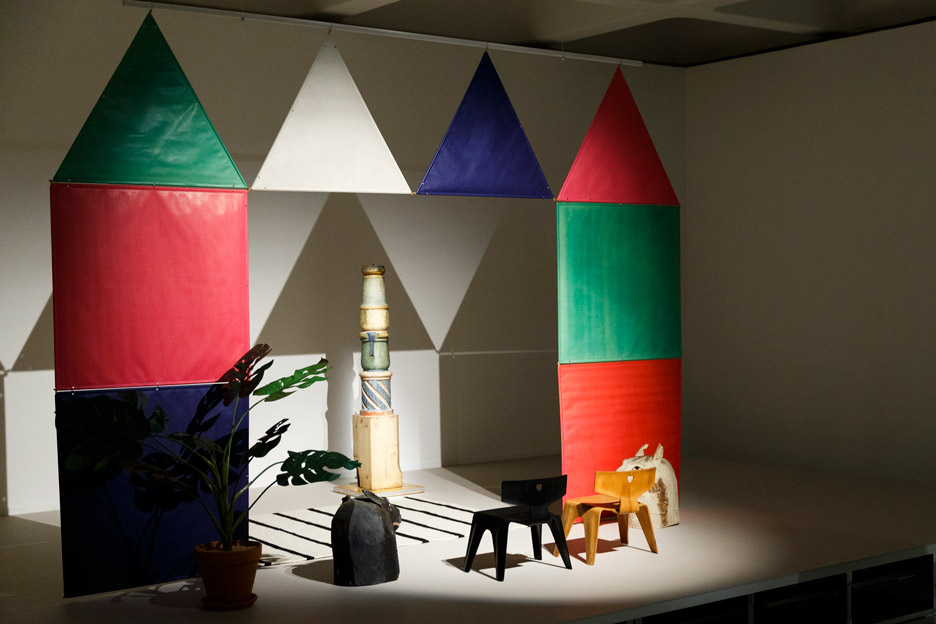
"Since the last survey here in London in 1999, the internet has exploded," said Ince. "Their work in communications particularly feels more relevant than ever."
Upstairs, different rooms are screening a selection of the Eames' films including Power of Ten – which was recently reinterpreted for a music video. Photography by Charles and art direction projects undertaken by Ray are also presented.
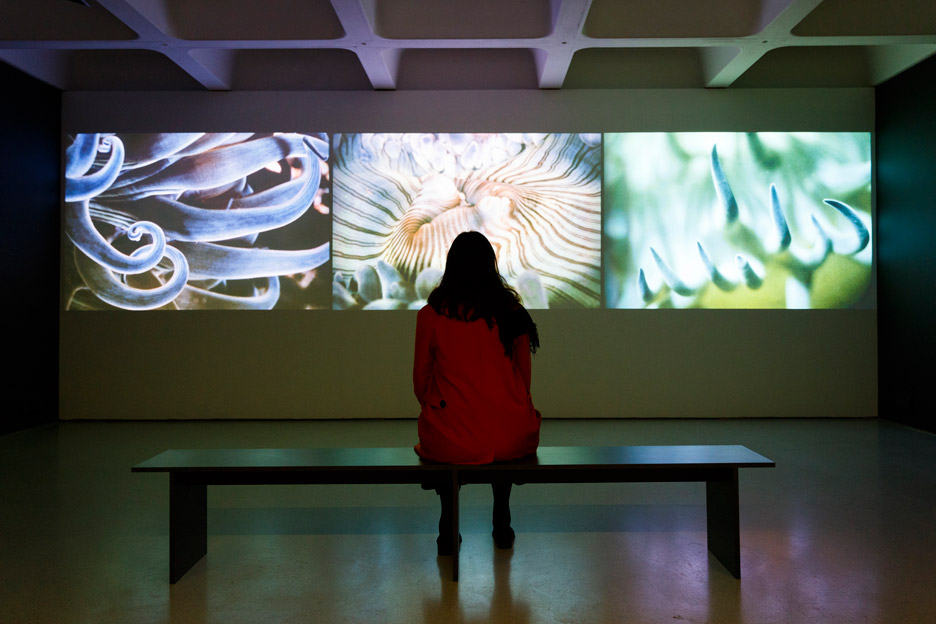
"For me visual communication is really a strong dimension of their practice," Ince said. "Even in the early years when they were concentrating on furniture, they were still taking photographs of the furniture, and applying that to editorial and advertising design. They were always thinking about how to communicate their ideas and their works."
The exhibition was designed by London-based 6a Architects. In the spirit of the Eameses, the studio used readily available construction materials to create a clean and minimal backdrop for the work.
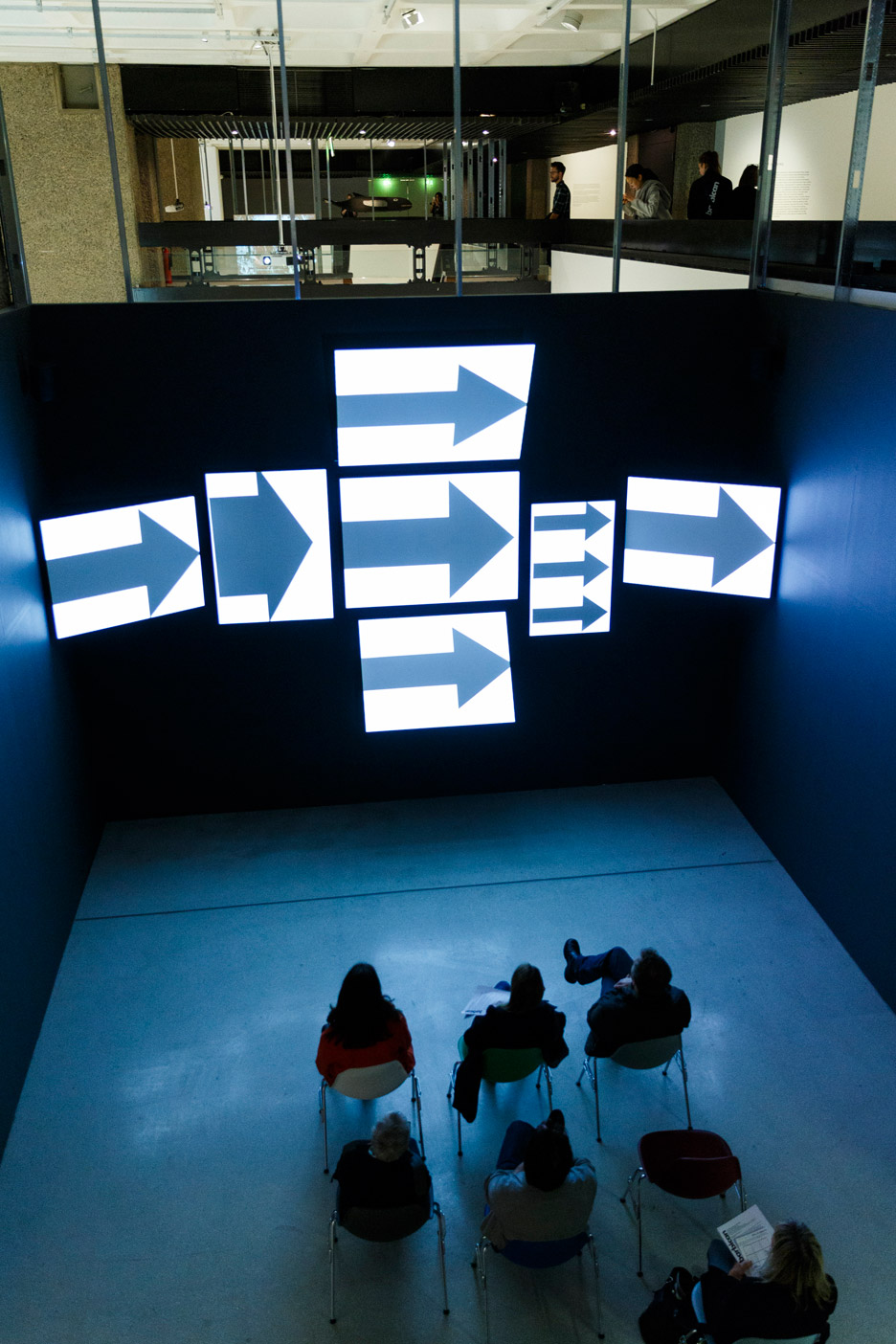
"[6a] came up with a very simple response to the Eames' own interest in industrial off-the-shelf materials and prefabricated parts," said Ince. "So we have adapted this stud-walling system to make our walls and our plinths and just subtracted the panels when we needed a bit of space."
Designer John Morgan created the graphics and the catalogue to accompany the exhibition. It runs from 21 October 2015 until 14 February 2016.
Photography is by Tristan Fewings, courtesy of Getty Images.